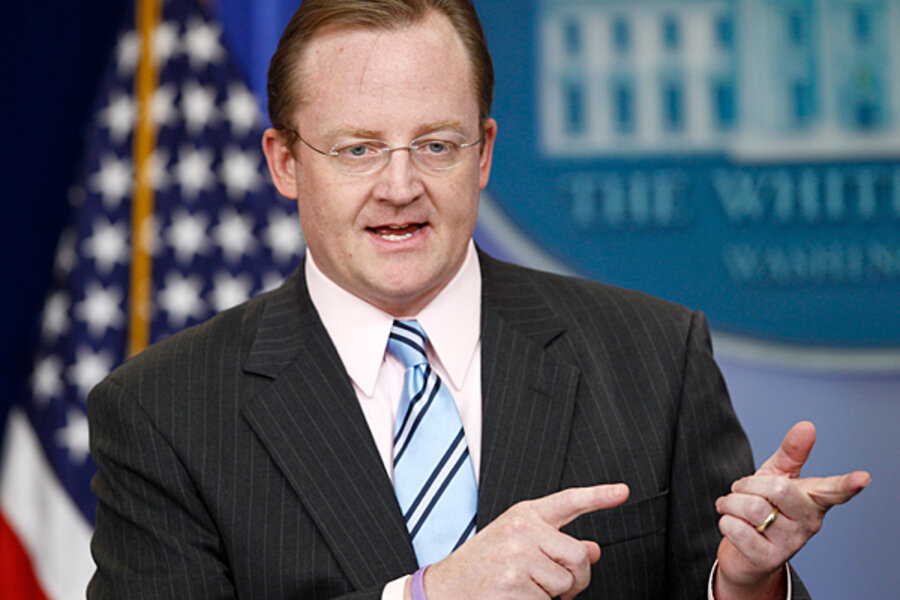White House briefing room without TV cameras: more light, less heat
Loading...
| Washington
When Robert Gibbs met the press Thursday morning, the topics had a familiar ring: the battle with Republicans for control of Congress, the Gulf oil spill, relations with Pakistan, and Michelle Obama’s selection by Forbes magazine as the world’s most powerful woman.
What was unusual about the 10:45 a.m. gathering in the White House briefing room was that, for a second day in a row, Mr. Gibbs had ordered that TV cameras not be turned on. Gibbs – coatless in a pink shirt and blue tie – stood at the side of the familiar briefing room podium and responded to reporters in a setting notably less charged than when the cameras are on.
The morning meeting with reporters, known in Washington parlance as a “gaggle,” is not a signal that television’s supremacy in the capital’s media culture is imperiled. At 1 p.m., Gibbs was slated to be back in the briefing room, this time with the cameras on.
Reporters at the session commented on the slightly less confrontational tone of the nontelevised session. And Gibbs’s responses were a bit more conversational than in on-camera sessions – and he was a bit less observant about taking questions based on where a reporter’s chair was located in the briefing room.
Gibbs began by offering to go into detail on a preliminary report issued Wednesday by a commission appointed by the president to investigate the Gulf oil spill. The commission suggested that the White House blocked government scientists from telling the public how bad the situation could be.
Gibbs's response: “There was never an effort” not to put out the most timely information.
Veteran CBS White House correspondent Bill Plante said Gibbs was “trying to take the edge off” the story. The implication was that Gibbs was using the off-camera session to provide background on the oil story and perhaps diminish reporters’ interest in pursuing it at the on-camera briefing later in the day.
It was evidence that, despite the more collegial tone, neither side abandoned its traditional role at the morning session – the press seeking the revealing and unexpected, the spokesman putting forth the strongest case for the president and his policies.
TV cameras became a common briefing room presence when Marlin Fitzwater was press secretary for President George H. W. Bush. But Mr. Fitzwater only allowed the cameras to be on for the first five minutes of the briefing and did not allow them to record sound. Full TV coverage of the briefings, with sound, came in 1995 when Mike McCurry was press secretary for Bill Clinton.
On Thursday, one of Gibbs’s most colorful comments came as he was walking out of the session. Asked by a reporter how he felt about Forbes magazine naming Michelle Obama the most powerful woman in the world, he quipped it was a “more accurate Forbes story than the last cover.”
Gibbs had strongly protested a recent Forbes cover about the president titled, “How He Thinks,” by Dinesh D’Souza. Among other things, the cover asserted that the president adopted “the cause of anti-colonialism” from his Kenyan father. Gibbs told the Washington Post that the cover represented “a new low.”





